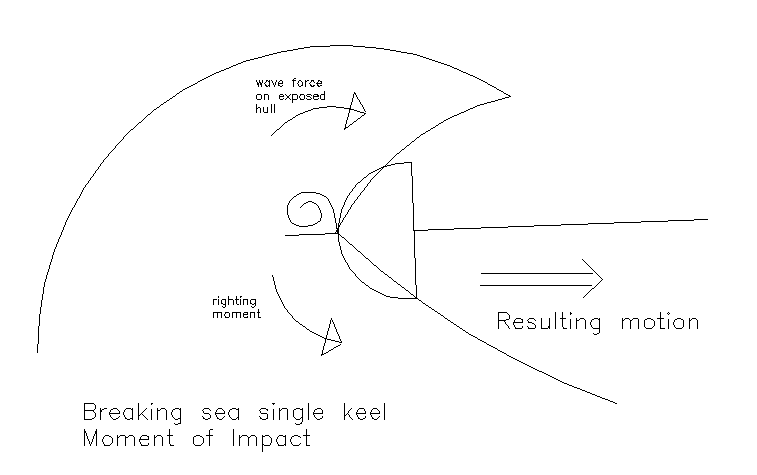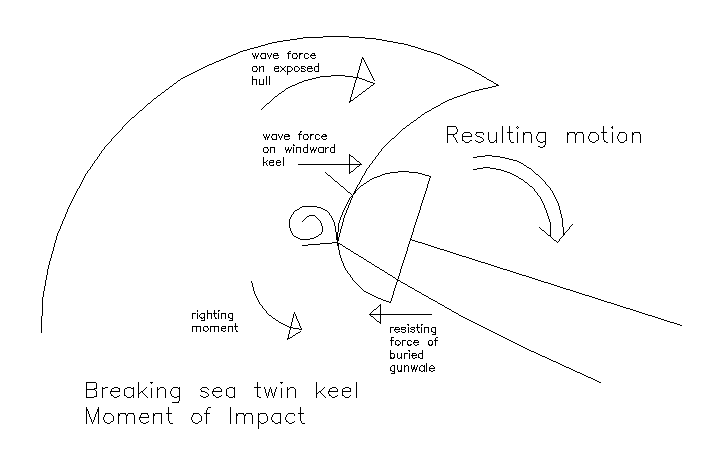Twin keels have long been popular in areas of extreme tides, to allow boats to self-stand at low tide. They are rarely found in offshore boats (or in areas of modest tide). Typically this is for good reason.
In a single keelboat, this occurs at less than 90 degrees of heel, allowing the topsides to carry the deck sideways down the face of the wave.
At the same time, the windward keel is now well clear of the water, immediately in the path of the oncoming breaking sea. The large surface area of the keel forms an ideal spot for the breaking sea to catch the boat and capsize it over the pivot formed by the now well-buried deck gunwales.
For this reason, we do not recommend twin keels for offshore boats. The exception would be short keels welded towards the stern of the boat to act more as skegs than keels. See Twin Rudders.
A graphical explanation follows:

In breaking seas the forces on an adequately ballasted, single keel hull are fairly evenly distributed. Rather than capsize the vessel, the forces tend to lift the keel to the surface and push the vessel sideways, dissipating the force before the vessel can capsize. The righting moment is near maximum, and will increase is the vessel tries to roll further. This is a balanced situation.

In breaking seas the forces on a twin keel hull are not evenly distributed. The hull must roll further before the leeward keel begins to slip. This reduces the righting moment and exposes more of the hull to the breaking impact, increasing the capsize force. The righting moment is past maximum and will decrease further as the vessel tries to roll. This is an unbalanced situation.
As well the increased angle of heel exposes the windward keel to the breaking impact, further increasing the capsize force, and buries the leeward gunwale, providing a pivot point to induce a capsize. The vessel rolls in the direction of capsize rather than slipping sideways to resist capsize.
To summarize:
Single Keel
- Keel comes free before 90 degrees
- Vessel is near the point of maximum righting force
- Righting moment will increase if the vessel rolls further
- Righting moment and capsize force balanced
- Vessel will slide sideways decreasing capsize risk.
Twin Keel
- Leeward keel comes free past 90 degrees
- More of windward hull is exposed for capsize force
- Windward keel is exposed to capsize force
- Leeward gunwale is buried, forming a pivot point for capsize
- Vessel is past the point of maximum righting force
- Righting moment will decrease if the vessel rolls further
- Righting moment and capsize force unbalanced
- Vessel will roll increasing capsize risk.